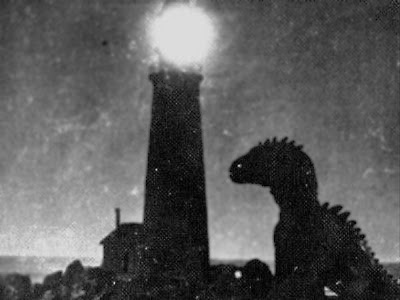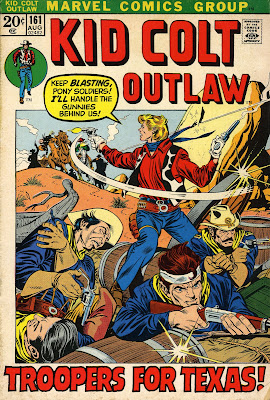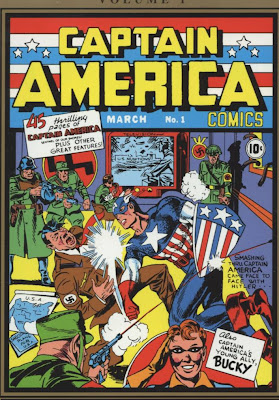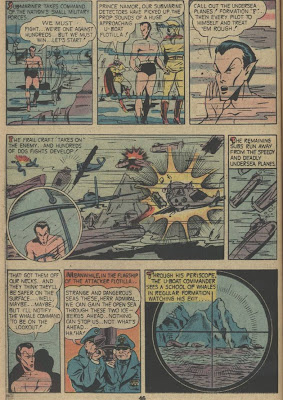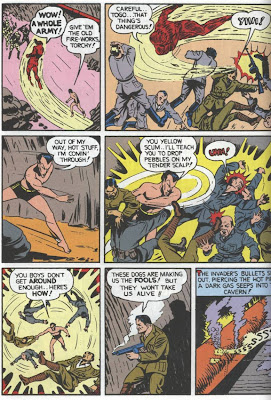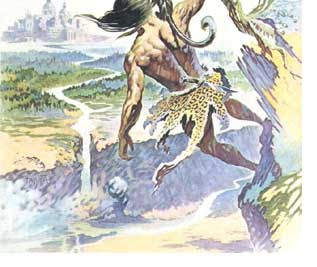
Tarzan of the Apes came to radio three times during that medium’s Golden Age. He appeared first in 1932 as a daily serial, broadcast three times a week in 15-minute episodes.
He returned to radio again in 1934 & 1936, for two separate 39-part stories.
The ape man’s last venture into radio was in the early 1950’s with a weekly half-hour show.
All three incarnations told entertaining stories, but my personal favorites are the 1934/36 serials. Both stories, Tarzan
and the Diamonds of Ashur and
Tarzan and the Fires of Tohr, are great adventures.
The story for the
Diamonds of Ashur, which Burroughs reused for his 1938 novel
Tarzan and the Forbidden City, finds Tarzan and his friend Paul d’Arnot escorting an expedition looking for a missing explorer. The explorer is said to have found the lost city of Ashur, which is reputed to be the location of the priceless Father of Diamonds. A rival expedition, interested only in the diamond, is also looking for Ashur.
This made for a large cast of supporting characters, something that radio drama usually shied away from to avoid confusing the audience. But both this serial and its 1936 follow-up, Tarzan and the Fires of Tohr, use a neat trick that allows us to keep track of everyone. The various characters represented a polyglot of nationalities and each had a strong accent. The individual French, German, Swedish, Chinese, and Irish accents identified each character for us, so we never lose track of who is who.
Multiple characters allow the serials to frequently use the technique of frequently shifting from one character’s point-of-view to another to generate suspense. The occasional deaths of a few of the supporting characters, including sympathetic ones, also help in this regard.
Tarzan, by the way, is played by Carlton KeDell, who does a fine job of giving us a sense that Tarzan is highly intelligent, with a strong, fearless personality.
Both serials are extremely well-plotted and represent Tarzan’s finest hour on radio. Burroughs’s input into the productions kept Tarzan faithful to his print counterpart and presented us with interesting and internally consistent lost cities. The only weak point is an unavoidable one for a radio series: the ruling casts of both Ashur and Tohr all just happen to speak English. But justifications (albeit slim ones) for this are provided in the stories, so this is easy to forgive.
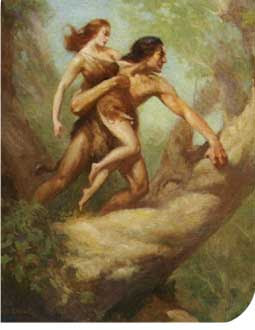
A third-person narrator is used to describe much of the action, including Tarzan’s hand-to-hand fights with everything from lions to crocodiles to a dinosaur. The overall plots grow quite complex, with the action sequences interwoven with political intrigue, human sacrifice, treachery and characters with hidden motives. These stories are carried coherently through thirty-nine episodes each and come to satisfying conclusions. They are models of precise storytelling and remain a joy to hear today.
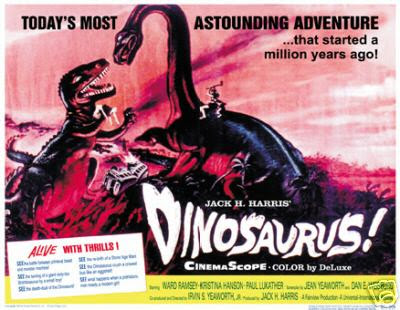 Dinosaurus (1960) presents us with yet another instance of dinosaurs being awakened from suspended animation, this time by a freak bolt of lightning. It's amazing how often that sort of thing happens.
Dinosaurus (1960) presents us with yet another instance of dinosaurs being awakened from suspended animation, this time by a freak bolt of lightning. It's amazing how often that sort of thing happens.



